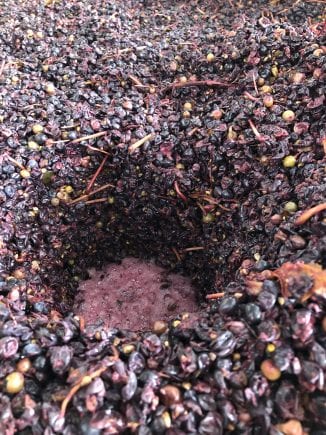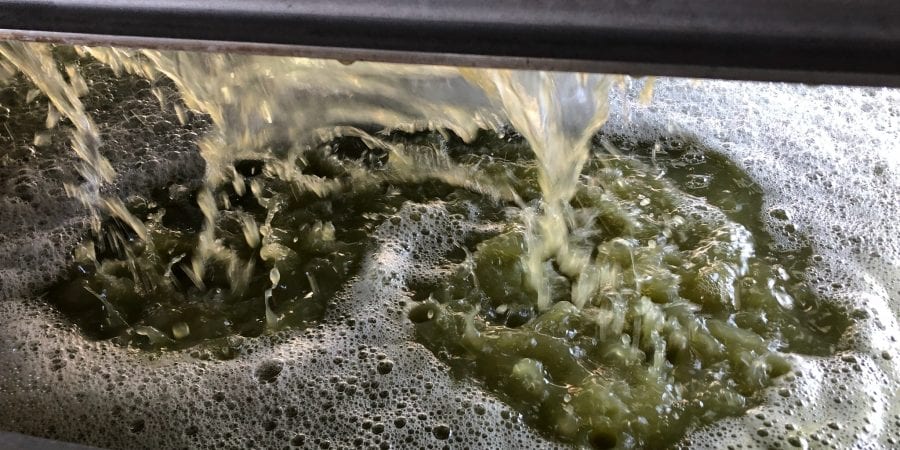As I mentioned a few weeks ago, I will be revisiting some of my very early posts. Way back when I first started this venture in 2018! Sometimes when I write a post, I run out of time to get into the nitty-gritty of a side topic. Today’s subject is one I have been meaning to come back to for a while.
But first, let’s get back to basics again…
How do you turn grape juice into wine?

Don’t tell Rob I told you this, but the wine-making equation is a pretty simple one (getting the wine to taste good is the hard bit!):
Grape juice + Yeast = Wine
And the process that happens when you add grape juice (sugar) and yeast is called fermentation.
Now, we’ve spoken a lot about fermentation, so I’m not going to dwell on that.
What I really want to talk to you about is that tiny little organism doing all the hard winemaking work (sorry Rob, you can’t take all the credit!).
Yeast
As long as you end up with some decent tasting grape juice, the single most import factor in making wine is the yeast and how you look after it while it is doing its thing.
Selection
There are literally hundreds of strains of yeast (not all used for winemaking).
 The most common yeast generally associated with winemaking is Saccharomyces cerevisiae which is also used in bread making and brewing.
The most common yeast generally associated with winemaking is Saccharomyces cerevisiae which is also used in bread making and brewing.
Yeast selection is one of the most important decisions for a winemaker. It is based on both on its ability to conduct the fermentation efficiently and also on the sensory features they add to the wine.
The first consideration in selecting a yeast is matching the strain to the grape variety and desired style of wine (e.g., dry vs. sweet, light vs. full-bodied, sparkling, etc.), and environmental conditions (e.g. temperature, pH) that may work against the yeast.
But there are soooo many other considerations including…
- alcohol tolerance
- rate of fermentation
- flocculation (Ability to settle out after fermentation is complete)
- volatile acid production
- acetaldehyde production
- ester production
- sulphur dioxide production
- malolactic compatibility
- hydrogen sulfide production
- nutrient requirements
Now, remind me to come back one day and explain why each of these things is important. But for now, I just wanted to demonstrate that there are a lot of things to think about even at this very early stage of the winemaking process. And you don’t want to get it wrong!
Controlling the environment
Once you’ve finally made a decision about which strain of yeast to use then you need to look after it.
If you’ve ever made bread or pizza dough then you’ll understand how demanding yeast can be when it comes to temperature.
Too cold and it won’t do anything. Too hot and you end up killing the yeast.
The optimum temperature depends on wine variety, style, speed of fermentation, type of yeast, etc. etc.
And even at “optimum” temperature, just a degree or two either side can make a huge difference to the rate of fermentation.
If the fermentation happens too quickly, then the temperature of the ferment increases. High temeperatures can encourage oxidation, microbiological spoilage and instability. It can also deplete the desirable aroma and flavour compounds, as well as alcohol. Above 38 degrees celcius, the yeast becomes “sluggish” and the fermentation may become “stuck” with residual sugar.
With a slow fermentation, there is a risk that the fermentation process will stop altogether, with the colder temperatures killing the yeast. The only option then is to reinoculate the ferment with more yeast to start the process again. This also interferes with the aroma and flavour of the wine. Also, the risk of oxidation is very high.
Gosh! So much to think about. That’s why all the way through the winemaker will keep a very close eye on the temperature and rate of fermentation. At least once a day. This way they can make adjustments to the temperature of the vessel to control the temperature and rate of fermentation.
Bacteria
There is also another little organism I should mention when it comes to secondary fermentation.
Remember, secondary fermentation is a type of fermentation used once the grape juice is turned to wine (using the primary fermentation) to change the style and flavour of the wine.
The one I’ve mentioned quite a bit is malolactic fermentation (MLF). It’s the one Rob uses to convert tart-tasting malic acid to softer tasting lactic acid (hence “malo”-“lactic”) in all our red wines plus some whites such as our Chardonnay, Fume Blanc and Rose. He’s a big fan!
Although it often occurs naturally after the completion of primary fermentation (particularly in red wines). It can also be induced by inoculation with a selected bacterial strain…

Oenococcus oeni
Oenococcus oeni, a member of the lactic acid bacteria (LAB) family. It is the main bacterium responsible for conducting MLF. This strain is chosen due to its ability to survive the harsh conditions of wine (high alcohol, low pH and low nutrients) and its production of desirable wine sensory attributes.
Malolactic bacteria have a reputation as being decidedly more difficult to work with than yeast.
Unlike yeast which is happy if it has some sugar and warmth (sounds like me?!), the secret to keeping MLF bacteria content enough to successfully complete the secondary fermentation is dependant on the synergistic relationship between five elements:
- Alcohol
- Temperature
- pH
- Sulphur levels
- Nutrients
Again, perhaps we can have a look at why all those things are important (which is mostly because they are also so interconnected) another day.
For now, we should just sit back and raise our glass to Rob. As much as he makes it look simple, it’s obviously not that at all!
Coming up…!
Next week I’m going to embark on what will probably turn into a several part series of posts. Someone brilliant suggested I do a glossary of wine terms.
Is there a wine-related word or phrase that has always stumped you? What term have you never really understood but have also never had the courage to ask?
Send me your suggestions via the comments below or send me an email and I’ll add it to my list!
And then…!
It seems that my interview with Madame Moody was well received! So, I’d like to do another one of those (sorry Heather!). Do you have any questions you’d like me to ask? Or do you have any questions for other members of the Moody family? We probably should share it around a bit!
Again, send me your questions via the comments below or send me an email.

How proud the Moodys must be of the beautiful little wine shop they’ve created!
Can /Has wine been fermented using sourdough bread culture?
Absolutely John!
And what a fascinating question… thanks.
It would be technically possible to make wine using a sourdough starter. However, using wild yeasts as you do in sourdough you are more than likely going to create some weird off-flavors in the wine. Best to stick to good old wine-making yeast!